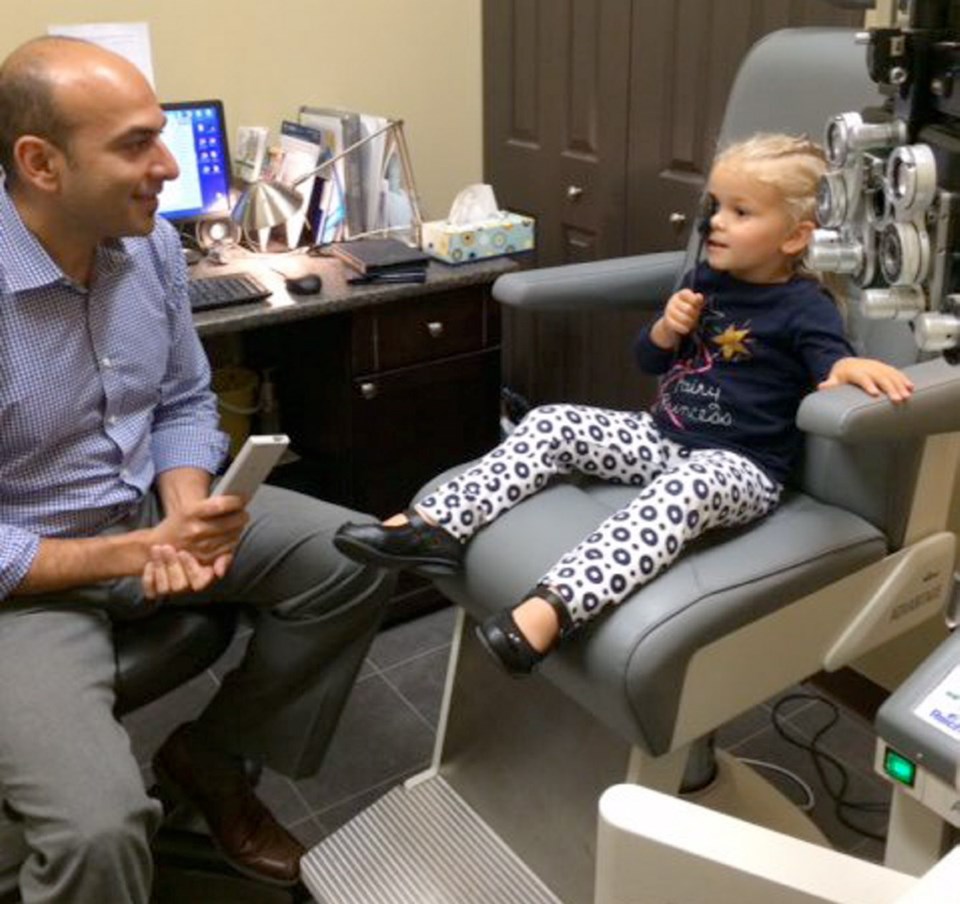Carolin Roussel first noticed her daughter, Paige, would squint in the sun and rub her eyes like she was tired, even though she was well-rested.
At about 21Ú2 years of age, when Paige was genuinely fatigued one eye would look outward and stay that way. Carolin, a licensed optician and owner of Eye Etiquette Optical Boutique, took Paige back to the optometrist who prescribed a number of exercises to better develop the muscles operating the wandering eye.
The child was given eyeglasses with a red filter on one eye or a green on the other. She watched special videos, or did puzzles with red/green elements that could only be discerned through the one eye equipped with the appropriate filter.
The whole idea was to force the wandering eye to work harder than the other.
Paige, now 31Ú2, also played games, like tossing bean bags into a basket to improve her depth perception. Between the filtered lenses and games her eyes have already improved.
“She has healthy eyes, she needs no prescription,” said Carolin. “But [the therapy] will be an ongoing process for the next couple of years.”
“If we left it alone her eyes would probably have gotten progressively worse,” she said. “And it only makes it tougher to correct as a child gets older.”
Paige’s story is a good example of the importance of early eye examinations for young children, beginning between six and nine months of age. Toddlers should have their eyes examined at least once between two and five and then annually until the age of 18.
Yearly examinations by an optometrist are covered by the B.C. Medical Service Plan until a child turns 19.
Meanwhile, some B.C. optometrists, with the support of lens and spectacle manufacturers, are beginning a program to see every child in kindergarten gets an eye examination. And if they are needed, a free pair of glasses, regardless of the parents’ financial situation.
The Greater Victoria School District has already signed up to become part of the program now under development.
Optometrist Gurpreet Leekha, partner in Royal Oak Optometry, said the real beauty of the program is it will catch children before the age of seven, considered the absolute outside mark for many corrective measures.
“Beyond the age of seven you are who you are and we can’t do much to change things,” said Leekha. “We can just give you eyeglasses at the time we need to intervene.”
“That’s why we think those early exams are crucial,” he said.
Leekha said infants, who can’t actually respond for a subjective eye test by reading a chart, are examined with instruments. These measure light entering and exiting the eyes to get a sense of how the baby’s eyesight it developing.
By toddler age, between two and three, a child can usually respond to a subjective test. They do things such as identify pictures of animals, like cats or dogs, on a sight chart.
By the age of five, a full eye exam is warranted. That includes examinations by an optometrist using instruments as well as asking children to respond to questions based on sight charts.
Leekha said screening examinations, where children are lined up and tested in a group, have not been satisfactory.
He said poor eyesight can impair a child’s development in many ways. Learning can be impaired, sports participation can be held back and all these problems can lead to difficult social issues.
His brother and sister got eyeglasses at an early age and recalls how profoundly it changed their lives.
“There are a lot of things that get affected when a child can’t see the way others do,” said Leekha.
“It affects a child’s development, socialization, confidence all sorts of things,” he said.
